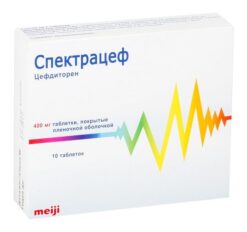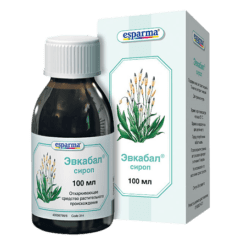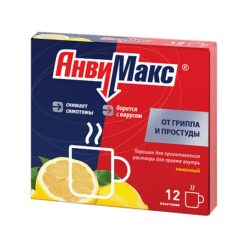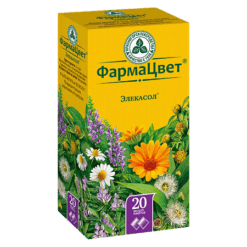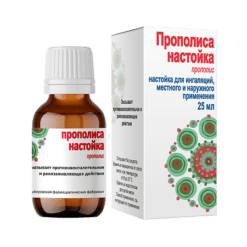No products in the cart.
Combipack, 6 mg+200 mg, 5
€1.00
Out of stock
(E-mail when Stock is available)
Description
In terms of structure and action, salbutamol is close to other beta2-adrenergic stimulants.
It has bronchodilator and tocolytic (relaxes uterine muscles) effects.
In therapeutic doses usually does not cause tachycardia (palpitations) and changes in blood pressure.
Indications
Indications
Treatment and prevention of reversible airway obstruction with:
– bronchial asthma (including nocturnal attacks of bronchial asthma);
— chronic obstructive bronchitis;
– emphysema and other respiratory diseases accompanied by bronchospasm.
Pharmacological effect
Pharmacological effect
In structure and action, salbutamol is close to other beta2-adrenergic stimulants.
It has a bronchodilator and tocolytic (relaxing the muscles of the uterus) effect.
In therapeutic doses, it usually does not cause tachycardia (increased heart rate) or changes in blood pressure.
Special instructions
Special instructions
The effectiveness of theophylline may be reduced in smokers.
Use caution when consuming large amounts of caffeine-containing foods or drinks during treatment.
Taking into account the profile of side effects, it is not recommended to drive vehicles or engage in other potentially hazardous activities that require increased concentration and speed of psychomotor reactions while taking the drug.
Combipack is not intended for the treatment of emergency conditions. Treatment with prolonged forms is carried out with periodic monitoring of theophylline concentration in the blood.
Long-acting medications significantly reduce the likelihood of dose-dependent side effects.
Active ingredient
Active ingredient
Salbutamol, Theophylline
Composition
Composition
1 tablet contains 6 mg of salbutamol,
theophylline 200 mg.
Pregnancy
Pregnancy
Use is contraindicated during pregnancy. During lactation, breastfeeding is stopped during treatment with the drug.
Contraindications
Contraindications
– hypersensitivity to theophylline (including other xanthine derivatives – caffeine, pentoxifylline, theobromine) and salbutamol;
– acute myocardial infarction;
– unstable angina;
– tachyarrhythmia;
– extrasystole;
– coronary heart disease;
— chronic heart failure;
– myocarditis;
– heart defects, including aortic stenosis;
– pheochromocytoma;
– glaucoma;
– pyloroduodenal narrowing;
– liver or kidney failure;
– pulmonary edema;
– sepsis;
– gastroesophageal reflux;
– recent history of gastrointestinal bleeding;
– severe arterial hyper- or hypotension;
– widespread vascular atherosclerosis;
– hemorrhagic stroke;
– hemorrhage in the retina of the eye;
– thyrotoxicosis;
— decompensated diabetes mellitus;
– epilepsy;
– increased convulsive activity;
– peptic ulcer of the stomach and duodenum in the acute stage;
– pregnancy;
– children under 16 years of age.
With caution: with gastric and duodenal ulcers (history), uncontrolled hypothyroidism (possibility of accumulation), prolonged hyperthermia, prostatic hyperplasia, in old age.
Side Effects
Side Effects
When using Combipack, the following side effects may occur.
From the nervous system: dizziness, headache, insomnia, nervous tension, agitation, anxiety, irritability, convulsions, tremor.
From the cardiovascular system: palpitations, tachycardia, arrhythmia, cardialgia, extrasystole, decreased blood pressure (BP), collapse, myocardial ischemia, increased frequency of angina attacks, a feeling of “flushes” of blood to the skin of the face.
From the respiratory system: tachypnea, pulmonary edema.
From the digestive system: feeling of heaviness in the stomach, gastralgia, nausea, vomiting, dry mouth, gastroesophageal reflux, heartburn, exacerbation of peptic ulcer, diarrhea, with long-term use – decreased appetite.
Allergic reactions: skin rash, itching, angioedema.
Laboratory indicators: albuminuria, hematuria, hyperglycemia, increased concentration of free fatty acids in the blood, hypokalemia.
Other: increased sweating.
Side effects decrease when the dose of the drug is reduced or disappear on their own with continued treatment during the first 2-3 weeks of therapy.
The literature describes the side effects of single drugs included in Combipack (theophylline and salbutamol) in case of overdose: allergic reactions (urticaria, erytomatous rashes, angioedema), urinary retention, psychoneurological disorders, including psychomotor agitation, finger tremor, confusion, anxiety, hallucinations, photophobia, convulsions.
The long-acting combination drug Kombipek compares favorably with single-drug drugs because, due to the slow release of active substances and multidirectional action in some respects (for example, urinary retention with salbutamol and the diuretic effect of theophylline), undesirable side reactions characteristic of single-drug drugs are largely neutralized.
Interaction
Interaction
Theophylline increases the likelihood of developing side effects of glucocorticosteroids, mineralcorticosteroids (hypernatremia), drugs for general anesthesia (increases the risk of ventricular arrhythmias), drugs that excite the central nervous system (increases neurotoxicity).
Antidiarrheal drugs and enterosorbents reduce the absorption of theophylline.
Rifampicin, phenobarbital, phenytoin, isoniazid, carbamazepine, sulfinpyrazone, aminoglutethimide, oral estrogen-containing contraceptives and moracizine, being inducers of microsomal liver enzymes, increase the clearance of theophylline, which may require an increase in its dose.
When used simultaneously with cytochrome P 450 inhibitors, macrolide antibiotics, lincomycin, allopurinol, cimetidine, isoprenaline, enoxacin, small doses of ethanol, disulfiram, fluoroquinolones, recombinant interferon-alpha, methotrexate, mexiletine, propafenone, thiabendazole, ticlopidine, with verapamil and during influenza vaccination, the intensity of theophylline action may increase, which may require a reduction in its dose.
Theophylline enhances the effect of beta-adrenergic agonists and diuretics (including by increasing glomerular filtration), reduces the effectiveness of lithium preparations and beta-blockers.
Theophylline is compatible with antispasmodics, is not used in combination with other xanthine derivatives, and is prescribed with caution simultaneously with anticoagulants.
Salbutamol enhances the effect of stimulants of the central nervous system and the cardiotropism of thyroid hormones.
Salbutamol increases the likelihood of glycoside intoxication and reduces the effectiveness of antihypertensive drugs and nitrates.
Xanthines, when used simultaneously with salbutamol, increase the likelihood of developing tachyarrhythmias; agents for inhalation anesthesia, levodopa – severe ventricular arrhythmias.
Monoamine oxidase inhibitors and tricyclic antidepressants, enhancing the effect of salbutamol, can lead to a sharp decrease in blood pressure.
Salbutamol is incompatible with non-selective beta-blockers.
The simultaneous use of salbutamol with anticholinergic drugs (including inhaled ones) may increase intraocular pressure.
Diuretics and glucocorticosteroids enhance the hypokalemic effect of salbutamol.
Overdose
Overdose
Symptoms: gastralgia, diarrhea, nausea, vomiting (including blood), gastrointestinal bleeding, tachypnea, facial skin flushing, tachycardia, ventricular arrhythmias, headache, hallucinations, insomnia, motor agitation, anxiety, photophobia, tremor, convulsions. In case of severe poisoning, epileptoid seizures may develop (especially in children aged 16 to 18 years without the occurrence of any precursors), hypoxia, metabolic acidosis, hyperglycemia, hypokalemia, decreased blood pressure, skeletal muscle necrosis, confusion, renal failure with myoglobinuria.
Treatment: discontinuation of the drug, gastric lavage, taking activated charcoal, laxatives, intestinal lavage with a combination of polyethylene glycol and electrolytes, forced diuresis, hemosorption, plasma sorption, hemodialysis (not very effective, peritoneal dialysis is not effective), symptomatic therapy with cardioselective beta-blockers for tachycardia. If convulsions occur, maintain airway patency and administer oxygen therapy. To relieve seizures – intravenous diazepam, 0.1-0.3 mg/kg (but not more than 10 mg). For severe nausea and vomiting, use metoclopramide or ondansetron (intravenously).
Storage conditions
Storage conditions
In a dry place, protected from light, at a temperature not exceeding 25 °C
Shelf life
Shelf life
5 years
Manufacturer
Manufacturer
Pharmapack, Russia
Additional information
| Shelf life | 5 years |
|---|---|
| Conditions of storage | In a dry, light-protected place at a temperature not exceeding 25 °C |
| Manufacturer | Pharmapek, Russia |
| Medication form | slow-release tablets |
| Brand | Pharmapek |
Related products
Buy Combipack, 6 mg+200 mg, 5 with delivery to USA, UK, Europe and over 120 other countries.


